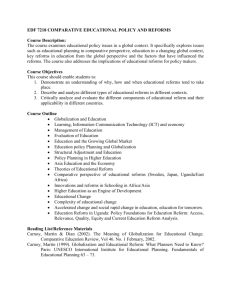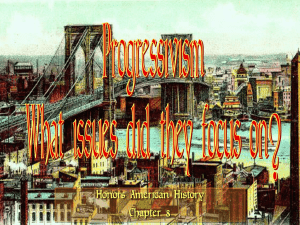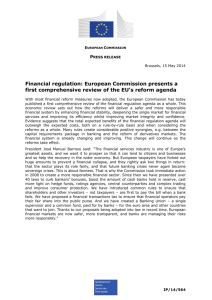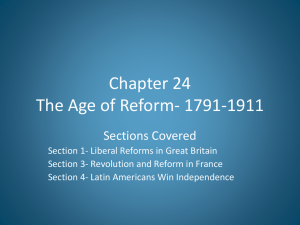j - IB2History
advertisement
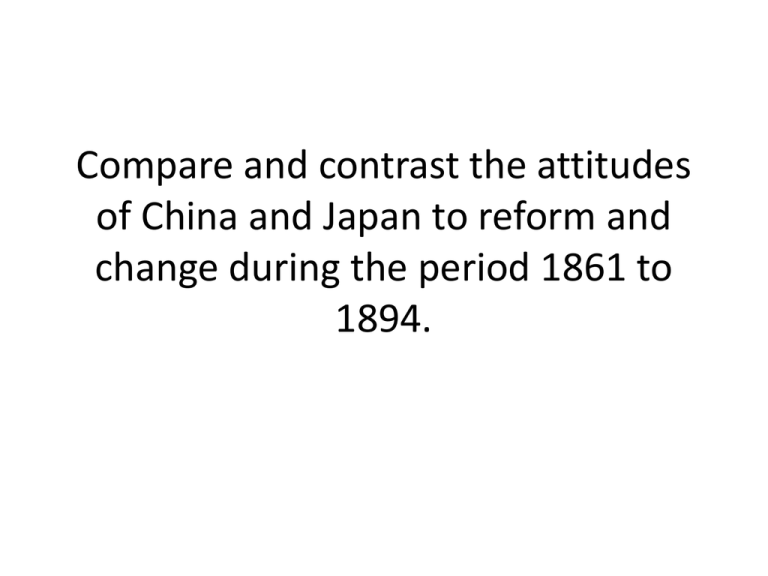
Compare and contrast the attitudes of China and Japan to reform and change during the period 1861 to 1894. Thesis statement • Although China’s attitude towards reform and change were similar to Japan’s attitude to some extent, there were fundamental differences between the reform movements in both nations. These differences outweigh the similarities. Point of comparison: nature of the reforms • Both Japan and China realised that conforming to western ideas and adopting western technology was the way forward. – Feng Guifen (pioneer of the Self Strengthening Movement): “Why are the Western Nations so small yet so strong? Why are we so large yet so weak?” – Japan: “Use the barbarian to control the barbarian” • Both Japan and China saw modernisation as a way to reduce foreign influence and ease tensions caused by the unequal treaties. • Both Japan and China claimed to maintain/”restore” a traditional order. – China: Tongzhi “Restoration” – Japan: Meiji “Restoration” Point of contrast: nature of the reforms • The Self Strengthening Movement was far more rooted in tradition. – China wanted to reinvigorate Confucianism more than to introduce Western ideas. – Although there were attempts to reinvigorate Shinto and loyalty towards the Emperor, the adoption of Western ideology took precedence. • Reforms in Japan were undertaken by the central government, for the benefit of the nation. The uncoordinated reforms in China were undertaken by a few leaders, unrelated with the central government. Whilst reforms in Japan were well funded, reforms in China were corrupt since there was little distinction between personal and national gain. Point of comparison: methods of reform • Three areas of reform were common to both countries: – Economic: development of infrastructure, industries, businesses, trade, etc. – Education: western curriculum and western ideas – Military: development of modern arsenals and western military techniques • Foreign aid was accepted by both nations, in the form of financial and intellectual support. • The political systems in both countries adjusted to allow greater contact with foreign nations. Point of contrast: methods of reform • The Chinese populace was unwilling to adopt western ideas, since they still had a superiority complex. However, the Japanese were more willing to adopt western ideas. • The changes in Japan were far greater. Unlike China, Japan’s reforms included: – – – – – – Development of capitalism Abolishment of feudalism and development of land ownership Development of a semi-democratic system Development of a western-style judiciary Changes in social lifestyle and social tastes Centralised military with conscription • China’s reforms were limited to certain provinces that the scholar gentry controlled. Japan’s reforms were nationwide. • Japan, unlike China, saw imperialist expansion as a way to strengthen the country. Point of contrast: hindrance factors for China • Certain hindrance factors created difficulty for reforms in China. Since it was relatively easier in Japan, their attitude towards change would have been more positive. – China had a large population and a large landmass. Far reaching reforms would take longer than Japan. – Western encroachments in China were far more severe than in Japan. • Another aim of the Self Strengthening Movement was to quell civil war in China. Japan didn’t have such problems, since the most severe case of civil war was during the short-lived Satsuma Rebellion. • The West wasn’t completely alien to the Japanese. Japan had learned about Western ideas before China through “Dutch Learning”. Assessment • The differences between the reform movements in China and Japan caused Japan to be more successful in modernising its country. This highlights a clear difference between Japan’s positive attitude towards modernisation and China’s negative attitude. • Historians agree with this assessment but emphasise different reasons why it is so. – Joseph Levenson and Mary Wright emphasize the incompatibility between China’s adherence to Confucianism and modernization. – J.A.G. Roberts and Immanuel Hsu emphasizes the lack of government support in China. – Nigel Cameron emphasizes corruption in China – Wakeman Jr. emphasizes the lack of development of capitalism in China Conclusion • Some elements of the reform movements in China and Japan were similar. Both saw it as a way forward, both saw it as a way to reduce foreign influence, both appeared to maintain traditional roots, both carried out similar reforms. • However, the attitudes to reform and change were much more different. Japan’s changes were wider, more centralised, more effective and less affected by problems. • Japan clearly had a positive attitude towards change, compared to China, making them more successful in the long-term.



